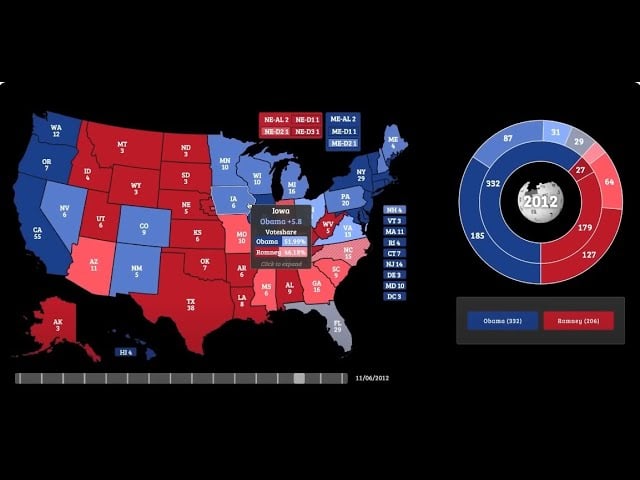CIA HACKING TOOLS VAULT 7 REVEALED BY WIKILEAKS
1. https://www.bitchute.com/video/KSdBhXUDu0wj/
2. https://newtube.app/user/RenaudBe/Do4YLwk
3. https://ugetube.com/watch/R1mKgG8VHuMA9zw
4. https://tv.gab.com/channel/renaudonemillion/view/62d05d8c057dbec931be1598
Wikileaks revealed that the CIA lost control of the majority of its hacking arsenal, code name Vault 7, including malware, viruses, trojans, weaponized "zero day" exploits, malware remote control systems and associated documentation. This extraordinary collection, which amounts to more than several hundred million lines of code, gives its possessor the entire hacking capacity of the CIA. The archive appears to have been circulated among former U.S. government hackers and contractors in an unauthorized manner.
"Year Zero" introduces the scope and direction of the CIA's global covert hacking program, its malware arsenal and dozens of "zero day" weaponized exploits against a wide range of U.S. and European company products, include Apple's iPhone, Google's Android and Microsoft's Windows and even Samsung TVs, which are turned into covert microphones.
Since 2001 the CIA has gained political and budgetary preeminence over the NSA, the U.S. National Security Agency. The CIA found itself building not just its now infamous drone fleet, but a very different type of covert, globe-spanning force — its own substantial fleet of hackers. The agency's hacking division freed it from having to disclose its often controversial operations to the NSA (its primary bureaucratic rival) in order to draw on the NSA's hacking capacities.
By the end of 2016, the CIA's hacking division, which formally falls under the agency's Center for Cyber Intelligence (CCI), had over 5000 registered users and had produced more than a thousand hacking systems, trojans, viruses, and other "weaponized" malware. Such is the scale of the CIA's undertaking that by 2016, its hackers had utilized more code than that used to run Facebook. The CIA had created, in effect, its "own NSA" with even less accountability and without publicly answering the question as to whether such a massive budgetary spend on duplicating the capacities of a rival agency could be justified.
CIA malware targets iPhone, Android, smart TVs
CIA malware and hacking tools are built by EDG (Engineering Development Group), a software development group within CCI (Center for Cyber Intelligence), a department belonging to the CIA's DDI (Directorate for Digital Innovation). The DDI is one of the five major directorates of the CIA
The EDG is responsible for the development, testing and operational support of all backdoors, exploits, malicious payloads, trojans, viruses and any other kind of malware used by the CIA in its covert operations world-wide.
The increasing sophistication of surveillance techniques has drawn comparisons with George Orwell's 1984, but "Weeping Angel", developed by the CIA's Embedded Devices Branch (EDB), which infests smart TVs, transforming them into covert microphones, is surely its most emblematic realization.
The attack against Samsung smart TVs was developed in cooperation with the United Kingdom's M.I 5, B.T.S.S. After infestation, Weeping Angel places the target TV in a 'Fake-Off' mode, so that the owner falsely believes the TV is off when it is on. In 'Fake-Off' mode the TV operates as a bug, recording conversations in the room and sending them over the Internet to a covert CIA server.
As of October 2014 the CIA was also looking at infecting the vehicle control systems used by modern cars and trucks. The purpose of such control is not specified, but it would permit the CIA to engage in nearly undetectable assassinations.
The CIA's Mobile Devices Branch (MDB) developed numerous attacks to remotely hack and control popular smart phones. Infected phones can be instructed to send the CIA the user's geolocation, audio and text communications as well as covertly activate the phone's camera and microphone.
Despite iPhone's minority share (14.5%) of the global smart phone market in 2016, a specialized unit in the CIA's Mobile Development Branch produces malware to infest, control and exfiltrate data from iPhones and other Apple products running iOS, such as iPads. CIA's arsenal includes numerous local and remote "zero days" developed by CIA or obtained from GCHQ, NSA, FBI or purchased from cyber arms contractors such as Baitshop. The disproportionate focus on iOS may be explained by the popularity of the iPhone among social, political, diplomatic and business elites.
A similar unit targets Google's Android which is used to run the majority of the world's smart phones (85%) including Samsung, HTC and Sony. 1.15 billion Android powered phones were sold last year. "Year Zero" shows that as of 2016 the CIA had 24 "weaponized" Android "zero days" which it has developed itself and obtained from GCHQ, NSA and cyber arms contractors.
These techniques permit the CIA to bypass the encryption of WhatsApp, Signal, Telegram, Wiebo, Confide and Cloackman by hacking the "smart" phones that they run on and collecting audio and message traffic before encryption is applied.
The CIA also runs a very substantial effort to infect and control Microsoft Windows users with its malware. This includes multiple local and remote weaponized "zero days", air gap jumping viruses such as "Hammer Drill" which infects software distributed on CD/DVDs, infectors for removable media such as USBs, systems to hide data in images or in covert disk areas "Brutal Kangaroo" and to keep its malware infestations going.
Many of these infection efforts are pulled together by the CIA's Automated Implant Branch (AIB), which has developed several attack systems for automated infestation and control of CIA malware, such as "Assassin" and "Medusa".
Attacks against Internet infrastructure and webservers are developed by NDB, the CIA's Network Devices Branch.
The CIA has developed automated multi-platform malware attack and control systems covering Windows, Mac OS X, Solaris, Linux and more, such as EDB's "HIVE" and the related "Cutthroat" and "Swindle" tools.
Many of the vulnerabilities used in the CIA's cyber arsenal are pervasive and some may already have been found by rival intelligence agencies or cyber criminals.
As an example, specific CIA malware revealed in "Year Zero" is able to penetrate, infest and control both the Android phone and iPhone software that runs or has run presidential Twitter accounts. The CIA attacks this software by using undisclosed security vulnerabilities ("zero days") possessed by the CIA but if the CIA can hack these phones then so can everyone else who has obtained or discovered the vulnerability. As long as the CIA keeps these vulnerabilities concealed from Apple and Google (who make the phones) they will not be fixed, and all phones will remain hackable.
Cyberwar' programs are a serious proliferation risk, as they are in fact just computer programs which can be pirated like any other. Once a single cyber 'weapon' is 'loose' it can spread around the world in seconds, to be used by peer states, cyber mafia and teenage hackers alike.
A number of intelligence community members have been arrested or subject to federal criminal investigations in separate incidents.
Most visibly, on February 8, 2017 a U.S. federal grand jury indicted Harold T. Martin with 20 counts of mishandling classified information. The Department of Justice alleged that it seized some 50,000 gigabytes of information from Harold T. Martin that he had obtained from classified programs at NSA and CIA, including the source code for numerous hacking tools.
In addition to its operations in Langley, Virginia, the CIA also uses the U.S. consulate in Frankfurt as a covert base for its hackers covering Europe, the Middle East and Africa. CIA hackers, CCIE, Center for Cyber Intelligence Europe, are given diplomatic passports and State Department cover and they can breeze through German Customs. Once in Frankfurt they can travel without further border checks to the 25 European countries that are part of the Shengen open border area — including France, Italy and Switzerland.
A number of the CIA's electronic attack methods are designed for physical proximity. These attack methods are able to penetrate high security networks that are disconnected from the internet, such as police record database. In these cases, a CIA officer, agent or allied intelligence officer acting under instructions, physically infiltrates the targeted workplace. The attacker is provided with a USB containing malware developed for the CIA for this purpose, which is inserted into the targeted computer. The attacker then infects and exfiltrates data to removable media. For example, the CIA attack system Fine Dining, provides 24 decoy applications for CIA spies to use. To witnesses, the spy appears to be running a program showing videos (e.g VLC), presenting slides (Prezi), playing a computer game (Breakout2, 2048) or even running a fake virus scanner (Kaspersky, McAfee, or Sophos). But while the decoy application is on the screen, the underlaying system is automatically infected and ransacked.
The CIA dramatically increased proliferation risks by making these systems unclassified. To attack its targets, the CIA usually requires that its implants communicate with their control programs over the internet. If CIA implants, Command & Control and Listening Post software were classified, then CIA officers could be prosecuted or dismissed for violating rules that prohibit placing classified information onto the Internet. Consequently the CIA has secretly made most of its cyber spying war code unclassified. The U.S. government is not able to assert copyright either, due to restrictions in the U.S. Constitution. This means that cyber 'arms' manufactures and computer hackers can freely "pirate" these 'weapons' if they are obtained. The CIA has primarily had to rely on obfuscation to protect its malware secrets.
Evading forensics and anti-virus
A series of standards lay out CIA malware infestation patterns which are likely to assist forensic crime scene investigators as well as Apple, Microsoft, Google, Samsung, Nokia, Blackberry, Siemens and anti-virus companies attribute and defend against attacks.
"Tradecraft DO's and DON'Ts" contains CIA rules on how its malware should be written to avoid fingerprints implicating the "CIA, US government, or its witting partner companies" in "forensic review". Similar secret standards cover the use of encryption to hide CIA hacker and malware communication (pdf), describing targets & exfiltrated data as well as executing payloads and persisting in the target's machines over time.
CIA hackers developed successful attacks against most well known anti-virus programs. These are documented in AV defeats, Personal Security Products, Detecting and defeating PSPs and PSP Debugger R.E. Avoidance. For example, Comodo was defeated by CIA malware placing itself in the Window's "Recycle Bin". While Comodo 6.x has a "Gaping Hole of DOOM".
The CIA's hand crafted hacking techniques pose a problem for the agency. Each technique it has created forms a "fingerprint" that can be used by forensic investigators to attribute multiple different attacks to the same entity.
This is analogous to finding the same distinctive knife wound on multiple separate murder victims. The unique wounding style creates suspicion that a single murderer is responsible. As soon one murder in the set is solved then the other murders also find likely attribution.
The CIA's Remote Devices Branch's UMBRAGE group collects and maintains a substantial library of attack techniques 'stolen' from malware produced in other states including the Russian Federation.
With UMBRAGE and related projects the CIA cannot only increase its total number of attack types but also misdirect attribution by leaving behind the "fingerprints" of the groups that the attack techniques were stolen from.
UMBRAGE components cover keyloggers, password collection, webcam capture, data destruction, persistence, privilege escalation, stealth, anti-virus (PSP) avoidance and survey techniques.
https://wikileaks.org/ciav7p1/
#CIA #Vault7 #WikiLeaks #JulianAssange #CentralIntelligenceAgency #NSA #NationalSecurityAgency #CIAMalware #Malware #Viruses #Trojans #CIAHackers #YearZero #Umbrage #BrutalKangaroo #CCI #EDG #DDE #EDB #MI5 #MDB #CCIE #BTSS #GCHQ #Cyberwar #iPhone #WhatsApp #Signal #Telegram #Wiebo #Android #SmartTV #Apple #Microsoft #Samsung #HTC #Sony #Google #Nokia #Comodo #Blackberry #Windows #Mac #OSX #Solaris #Linux #Kaspersky #McAfee #Sophos

CIA HACKING TOOLS VAULT 7 REVEALED BY WIKILEAKS
1. https://www.bitchute.com/video/KSdBhXUDu0wj/
2. https://newtube.app/user/RenaudBe/Do4YLwk
3. https://ugetube.com/watch/R1mKgG8VHuMA9zw
4. https://tv.gab.com/channel/renaudonemillion/view/62d05d8c057dbec931be1598
Wikileaks revealed that the CIA lost control of the majority of its hacking arsenal, code name Vault 7, including malware, viruses, trojans, weaponized "zero day" exploits, malware remote control systems and associated documentation. This extraordinary collection, which amounts to more than several hundred million lines of code, gives its possessor the entire hacking capacity of the CIA. The archive appears to have been circulated among former U.S. government hackers and contractors in an unauthorized manner.
"Year Zero" introduces the scope and direction of the CIA's global covert hacking program, its malware arsenal and dozens of "zero day" weaponized exploits against a wide range of U.S. and European company products, include Apple's iPhone, Google's Android and Microsoft's Windows and even Samsung TVs, which are turned into covert microphones.
Since 2001 the CIA has gained political and budgetary preeminence over the NSA, the U.S. National Security Agency. The CIA found itself building not just its now infamous drone fleet, but a very different type of covert, globe-spanning force — its own substantial fleet of hackers. The agency's hacking division freed it from having to disclose its often controversial operations to the NSA (its primary bureaucratic rival) in order to draw on the NSA's hacking capacities.
By the end of 2016, the CIA's hacking division, which formally falls under the agency's Center for Cyber Intelligence (CCI), had over 5000 registered users and had produced more than a thousand hacking systems, trojans, viruses, and other "weaponized" malware. Such is the scale of the CIA's undertaking that by 2016, its hackers had utilized more code than that used to run Facebook. The CIA had created, in effect, its "own NSA" with even less accountability and without publicly answering the question as to whether such a massive budgetary spend on duplicating the capacities of a rival agency could be justified.
CIA malware targets iPhone, Android, smart TVs
CIA malware and hacking tools are built by EDG (Engineering Development Group), a software development group within CCI (Center for Cyber Intelligence), a department belonging to the CIA's DDI (Directorate for Digital Innovation). The DDI is one of the five major directorates of the CIA
The EDG is responsible for the development, testing and operational support of all backdoors, exploits, malicious payloads, trojans, viruses and any other kind of malware used by the CIA in its covert operations world-wide.
The increasing sophistication of surveillance techniques has drawn comparisons with George Orwell's 1984, but "Weeping Angel", developed by the CIA's Embedded Devices Branch (EDB), which infests smart TVs, transforming them into covert microphones, is surely its most emblematic realization.
The attack against Samsung smart TVs was developed in cooperation with the United Kingdom's M.I 5, B.T.S.S. After infestation, Weeping Angel places the target TV in a 'Fake-Off' mode, so that the owner falsely believes the TV is off when it is on. In 'Fake-Off' mode the TV operates as a bug, recording conversations in the room and sending them over the Internet to a covert CIA server.
As of October 2014 the CIA was also looking at infecting the vehicle control systems used by modern cars and trucks. The purpose of such control is not specified, but it would permit the CIA to engage in nearly undetectable assassinations.
The CIA's Mobile Devices Branch (MDB) developed numerous attacks to remotely hack and control popular smart phones. Infected phones can be instructed to send the CIA the user's geolocation, audio and text communications as well as covertly activate the phone's camera and microphone.
Despite iPhone's minority share (14.5%) of the global smart phone market in 2016, a specialized unit in the CIA's Mobile Development Branch produces malware to infest, control and exfiltrate data from iPhones and other Apple products running iOS, such as iPads. CIA's arsenal includes numerous local and remote "zero days" developed by CIA or obtained from GCHQ, NSA, FBI or purchased from cyber arms contractors such as Baitshop. The disproportionate focus on iOS may be explained by the popularity of the iPhone among social, political, diplomatic and business elites.
A similar unit targets Google's Android which is used to run the majority of the world's smart phones (85%) including Samsung, HTC and Sony. 1.15 billion Android powered phones were sold last year. "Year Zero" shows that as of 2016 the CIA had 24 "weaponized" Android "zero days" which it has developed itself and obtained from GCHQ, NSA and cyber arms contractors.
These techniques permit the CIA to bypass the encryption of WhatsApp, Signal, Telegram, Wiebo, Confide and Cloackman by hacking the "smart" phones that they run on and collecting audio and message traffic before encryption is applied.
The CIA also runs a very substantial effort to infect and control Microsoft Windows users with its malware. This includes multiple local and remote weaponized "zero days", air gap jumping viruses such as "Hammer Drill" which infects software distributed on CD/DVDs, infectors for removable media such as USBs, systems to hide data in images or in covert disk areas "Brutal Kangaroo" and to keep its malware infestations going.
Many of these infection efforts are pulled together by the CIA's Automated Implant Branch (AIB), which has developed several attack systems for automated infestation and control of CIA malware, such as "Assassin" and "Medusa".
Attacks against Internet infrastructure and webservers are developed by NDB, the CIA's Network Devices Branch.
The CIA has developed automated multi-platform malware attack and control systems covering Windows, Mac OS X, Solaris, Linux and more, such as EDB's "HIVE" and the related "Cutthroat" and "Swindle" tools.
Many of the vulnerabilities used in the CIA's cyber arsenal are pervasive and some may already have been found by rival intelligence agencies or cyber criminals.
As an example, specific CIA malware revealed in "Year Zero" is able to penetrate, infest and control both the Android phone and iPhone software that runs or has run presidential Twitter accounts. The CIA attacks this software by using undisclosed security vulnerabilities ("zero days") possessed by the CIA but if the CIA can hack these phones then so can everyone else who has obtained or discovered the vulnerability. As long as the CIA keeps these vulnerabilities concealed from Apple and Google (who make the phones) they will not be fixed, and all phones will remain hackable.
Cyberwar' programs are a serious proliferation risk, as they are in fact just computer programs which can be pirated like any other. Once a single cyber 'weapon' is 'loose' it can spread around the world in seconds, to be used by peer states, cyber mafia and teenage hackers alike.
A number of intelligence community members have been arrested or subject to federal criminal investigations in separate incidents.
Most visibly, on February 8, 2017 a U.S. federal grand jury indicted Harold T. Martin with 20 counts of mishandling classified information. The Department of Justice alleged that it seized some 50,000 gigabytes of information from Harold T. Martin that he had obtained from classified programs at NSA and CIA, including the source code for numerous hacking tools.
In addition to its operations in Langley, Virginia, the CIA also uses the U.S. consulate in Frankfurt as a covert base for its hackers covering Europe, the Middle East and Africa. CIA hackers, CCIE, Center for Cyber Intelligence Europe, are given diplomatic passports and State Department cover and they can breeze through German Customs. Once in Frankfurt they can travel without further border checks to the 25 European countries that are part of the Shengen open border area — including France, Italy and Switzerland.
A number of the CIA's electronic attack methods are designed for physical proximity. These attack methods are able to penetrate high security networks that are disconnected from the internet, such as police record database. In these cases, a CIA officer, agent or allied intelligence officer acting under instructions, physically infiltrates the targeted workplace. The attacker is provided with a USB containing malware developed for the CIA for this purpose, which is inserted into the targeted computer. The attacker then infects and exfiltrates data to removable media. For example, the CIA attack system Fine Dining, provides 24 decoy applications for CIA spies to use. To witnesses, the spy appears to be running a program showing videos (e.g VLC), presenting slides (Prezi), playing a computer game (Breakout2, 2048) or even running a fake virus scanner (Kaspersky, McAfee, or Sophos). But while the decoy application is on the screen, the underlaying system is automatically infected and ransacked.
The CIA dramatically increased proliferation risks by making these systems unclassified. To attack its targets, the CIA usually requires that its implants communicate with their control programs over the internet. If CIA implants, Command & Control and Listening Post software were classified, then CIA officers could be prosecuted or dismissed for violating rules that prohibit placing classified information onto the Internet. Consequently the CIA has secretly made most of its cyber spying war code unclassified. The U.S. government is not able to assert copyright either, due to restrictions in the U.S. Constitution. This means that cyber 'arms' manufactures and computer hackers can freely "pirate" these 'weapons' if they are obtained. The CIA has primarily had to rely on obfuscation to protect its malware secrets.
Evading forensics and anti-virus
A series of standards lay out CIA malware infestation patterns which are likely to assist forensic crime scene investigators as well as Apple, Microsoft, Google, Samsung, Nokia, Blackberry, Siemens and anti-virus companies attribute and defend against attacks.
"Tradecraft DO's and DON'Ts" contains CIA rules on how its malware should be written to avoid fingerprints implicating the "CIA, US government, or its witting partner companies" in "forensic review". Similar secret standards cover the use of encryption to hide CIA hacker and malware communication (pdf), describing targets & exfiltrated data as well as executing payloads and persisting in the target's machines over time.
CIA hackers developed successful attacks against most well known anti-virus programs. These are documented in AV defeats, Personal Security Products, Detecting and defeating PSPs and PSP Debugger R.E. Avoidance. For example, Comodo was defeated by CIA malware placing itself in the Window's "Recycle Bin". While Comodo 6.x has a "Gaping Hole of DOOM".
The CIA's hand crafted hacking techniques pose a problem for the agency. Each technique it has created forms a "fingerprint" that can be used by forensic investigators to attribute multiple different attacks to the same entity.
This is analogous to finding the same distinctive knife wound on multiple separate murder victims. The unique wounding style creates suspicion that a single murderer is responsible. As soon one murder in the set is solved then the other murders also find likely attribution.
The CIA's Remote Devices Branch's UMBRAGE group collects and maintains a substantial library of attack techniques 'stolen' from malware produced in other states including the Russian Federation.
With UMBRAGE and related projects the CIA cannot only increase its total number of attack types but also misdirect attribution by leaving behind the "fingerprints" of the groups that the attack techniques were stolen from.
UMBRAGE components cover keyloggers, password collection, webcam capture, data destruction, persistence, privilege escalation, stealth, anti-virus (PSP) avoidance and survey techniques.
https://wikileaks.org/ciav7p1/
#CIA #Vault7 #WikiLeaks #JulianAssange #CentralIntelligenceAgency #NSA #NationalSecurityAgency #CIAMalware #Malware #Viruses #Trojans #CIAHackers #YearZero #Umbrage #BrutalKangaroo #CCI #EDG #DDE #EDB #MI5 #MDB #CCIE #BTSS #GCHQ #Cyberwar #iPhone #WhatsApp #Signal #Telegram #Wiebo #Android #SmartTV #Apple #Microsoft #Samsung #HTC #Sony #Google #Nokia #Comodo #Blackberry #Windows #Mac #OSX #Solaris #Linux #Kaspersky #McAfee #Sophos



















